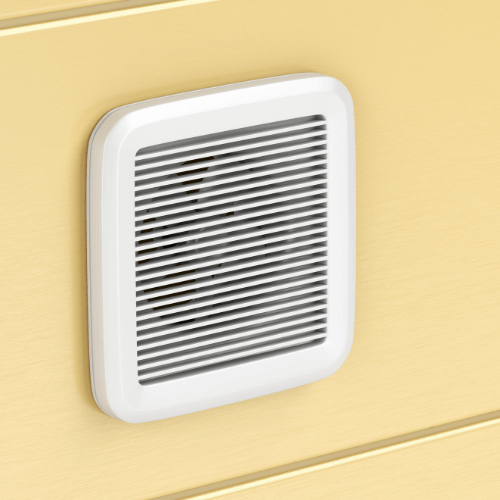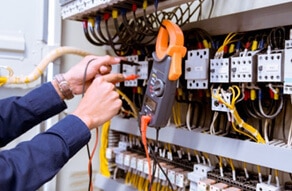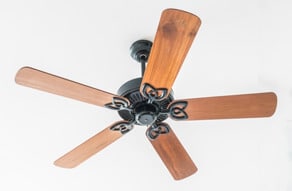Call us now
0439 823 190Exhaust Fan Installation Services – Everything You Need To Know
Posted on September 4, 2021

An exhaust fan installation is where a licensed electrician installs fans into kitchens and bathrooms. These work to ventilate the air, ensure the rooms are healthy and remove particles, such as moisture, smoke and fumes. Here at The Local Electrician, our Emergency Electrician services have our qualified electricians install exhaust fans in any place.
The average cost of an exhaust fan installation is $150 to $700 depending on the type of installation. There are many models of exhaust fans, including wall mounted, ceiling mounted, window mounted to exhaust fans. Electricians are needed to install exhaust fans when there are electrical components and ductwork involved.
What are the Different Types of Bathroom Exhaust Fans?
Bathrooms have an exhaust fan to remove the moisture that was created from showers or baths. The air circulation of the bathroom is better from the exhaust fan and it also helps with temperature control and preventing a build up of mould. There are five main types of exhaust fans that can be installed in bathrooms:
- Ceiling exhaust fan – the exhaust fan is mounted on the ceiling and will expel any air or moisture upwards. This air is diverted to a roof cavity or will transfer the indoor air outside. Ceiling mounted fans are one of the more common bathroom exhaust fans as they are reliable, effective and can come in either ductable or non-ductable models.
- Wall exhaust fan – a wall fan is a great option when ceiling and roof space is limited. It works by a motor being connected to the inside wall then connects outside through tubing or ducting. The wall mounted exhaust fan is a great alternative to ceiling mounted fans and is easy to install.
- Inline exhaust fan – this is where the fan is installed in between the lengths of the ducting. This is usually for areas where the exhaust fan cannot be installed directly in the ceiling due to limited space. Inline exhaust fans are also often quieter than ceiling mounted as the fan is further into the ceiling rather than directly in the opening.
- Window exhaust fan- installing an exhaust through the window is often used for apartments and units where roof and wall space is limited. There are two sections of the window fan, one inside and one outside, to ventilate the air.
- Multi-Purpose exhaust fan- some exhaust fans are also lights and can heat up the room. These have three functions and are often liked due to their many uses. One downside with this three-in-one fan is that it is often more expensive to install and purchase.
What are the Different Types of Kitchen Exhaust Fans?
Kitchen exhaust fans have the same purpose to ventilate the air as bathroom fans have but are installed in the kitchen. Kitchen fans are mainly used to remove any fumes from cooking and keep the air and temperature at good levels. The main types of exhaust fans that are installed into kitchens are:
- Wall – these exhaust fans are connected to the wall and will help ventilate air around the cooktop and stove.
- Island – for cooking areas that are on an island bench an exhaust fan can be installed on top of it. This will help with directly moving the air away from the kitchen and into the venting.
- Outdoor – for kitchens that are located outside an exhaust fan will be needed to still ventilate the air. This is to prevent the certain area from being unventilated, such as in barbeque areas where smoke is common.
- Range Hood – a range hood will have a mechanical fan to ventilate air above the cooking zone. It mostly hangs above the cooktop or stove and comes in many different models and styles.
- Microwave – the microwave can have its own venting system to ensure that the air is ventilated inside the appliance. The microwave will have its ductwork that will travel to the main ductwork or its own then outside the building.
- Downdraft – this type of fan has the same function as a range hood but is more hidden and sits behind the cooktop or stove.
How Much Does a Bathroom Exhaust Fan Installation Cost?
Bathroom exhaust fan installation can cost on average $530, where the smaller ranges from $240 and the service can go as high as $760. The fan itself can cost as little as $20 but some models can go up to $420. More energy efficient models will cost more to begin with but to run the exhaust fan will cost lower which is why they are more recommended. When vetting has to be installed to connect the fan then the installation prices for ductwork can also add $300 to $3000 to the installation price.
How Much Does a Kitchen Exhaust Fan Installation Cost?
The installation price for installing kitchen exhaust fans is on average $150 but can rise to $300 or more. Labour costs and where the kitchen fan will be installed also influence the final costs. Another major influence on the cost is the price of the actual exhaust fan that is being installed in the kitchen. For example, wall mounted fans can cost $300 to $500, island range hoods around $400 to $900 and downdraft can range from $1500 to $3500.
Trusted Level 2 Electrical Contractor for Sydney
The Local Electrician is the best place in Sydney to have electricians perform professional exhaust fan installation services. Each fully qualified electrician will arrive on time and operate safely during the installation process. Our emergency services ensure that we can work in all Sydney suburbs, including Greater Western Sydney and Hills District, to install exhaust fans.
We also offer reliable Level 2 Electrician services for our team to carry out advanced level 2 asp jobs in all places and properties.

For trusted exhaust fan installation services – rely on The Local Electrician!
Lifetime Warranty on Workmanship and Labor
Our Services
Our skilled electricians are qualified to carry out any electrical repair or installation within Sydney. We strive to deliver absolute customer satisfaction by offering electrical services that are affordable, safe and long lasting.
- Private Power Pole Installation: What Sydney Homeowners Need To Know - November 29, 2023
- Understanding Power Outages: When To Call a Level 2 Electrician - November 14, 2023
- Understanding Level 2 Electrical Needs: FAQs for Sydney Homeowners - October 7, 2023
Our Level 2 Local Electrical Services










